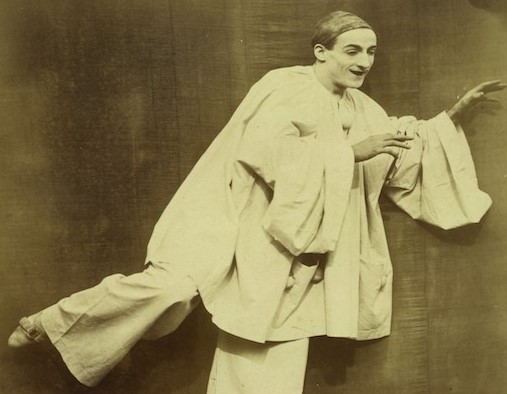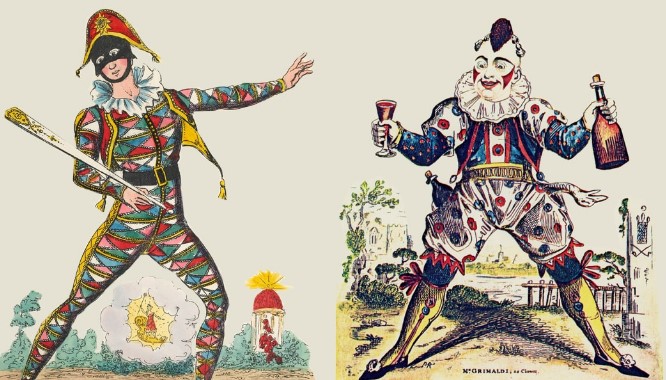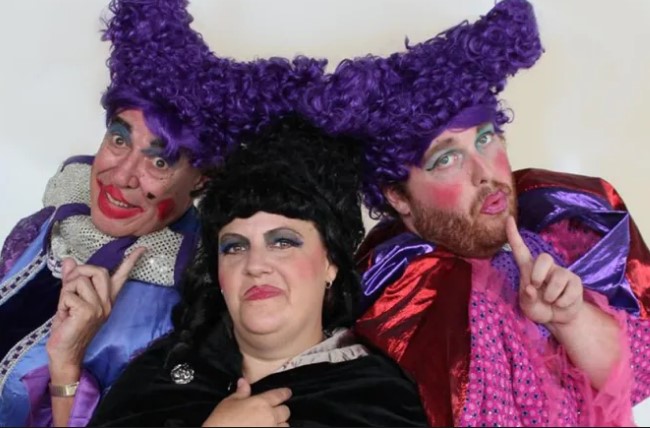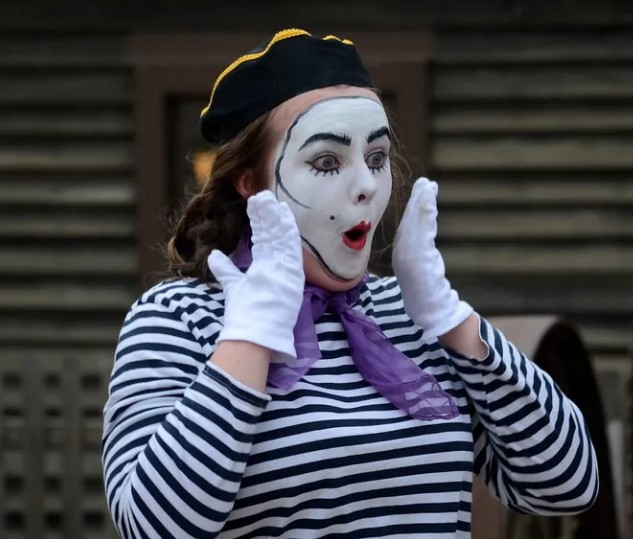Mime and pantomime stand as two distinguished pillars within the realm of performance arts, each captivating audiences with their unique blend of non-verbal storytelling. Rooted deeply in history, these forms of artistic expression have evolved, yet they continue to fascinate and entertain by conveying emotions and narratives without uttering a single word. Their ability to transcend language barriers makes them universally appreciated, showcasing the power of physical expression and creativity.
The primary difference between mime and pantomime lies in their approach to storytelling and audience interaction. Mime focuses on silent art, using gestures, facial expressions, and body movements to tell a story, devoid of spoken words and props. Pantomime, while also emphasizing physical expressiveness, incorporates spoken dialogue, music, and audience participation, often based on popular fairy tales and stories, to create a more interactive and exaggerated form of entertainment.
Despite their differences, both mime and pantomime share a common goal: to evoke emotions and convey stories through the art of movement. They offer a glimpse into the human experience, reflecting themes of love, struggle, joy, and the complexity of life, all without the need for speech. This expressive power highlights their significance in the performing arts, inviting audiences into a world where actions speak louder than words.

Mime Explained
Origins and History
The art of mime traces its roots back to ancient Greece, where performers entertained audiences without the use of spoken word, relying instead on body movement and facial expressions. It was not until the 19th century, however, that mime as we know it began to take shape, largely through the efforts of Jean-Gaspard Deburau in France. Deburau brought mime to the forefront of the theatrical world with his portrayal of Pierrot, a character that became synonymous with the art form.
Key Figures and Contributions
Following Deburau, Marcel Marceau became perhaps the most renowned mime artist in history. Marceau’s character, Bip the Clown, allowed him to express a spectrum of emotions and scenarios, from humor to tragedy, without uttering a single word. His contributions not only popularized mime worldwide but also refined it into an art that could convey complex stories and emotions.
Characteristics
Emphasis on Physical Movement
Mime artists use precise body movements and facial expressions to tell a story. This reliance on physicality means that mime is a universally understood language, capable of crossing cultural and linguistic barriers.
Lack of Spoken Words
The absence of spoken dialogue is a hallmark of mime. This silence allows the audience to focus more intensely on the performer’s actions, making the experience both intimate and impactful.
Common Themes and Settings
Mime often explores universal themes such as love, fear, and joy. Settings can range from the mundane to the fantastical, but all are brought to life through the mime’s imaginative performance.
Techniques and Styles
Notable Mime Techniques
- Isolation: Moving one part of the body independently of the others.
- Illusion: Creating the impression of invisible objects or barriers.
Variations in Mime Performances Worldwide
While European mime has a long and storied history, other cultures have developed their own forms of non-verbal storytelling, such as the Indian art of Mudra, used in classical dance to convey complex narratives without words.
Pantomime Explained
Origins and History
Pantomime, often shortened to panto, has its origins in the musical comedies of ancient Rome but was later adapted in Britain into the festive family shows known today. Unlike mime, pantomime combines music, spoken dialogue, and dance in a theatrical spectacle that is especially popular during the Christmas season.
Key Figures and Contributions
In the 18th century, John Weaver and Joseph Grimaldi revolutionized pantomime, introducing stories from fairy tales and folklore and incorporating audience participation. Grimaldi, in particular, is remembered as the father of modern clowning, having developed the character Joey, whose influence is still seen in clown performances today.
Characteristics
Use of Exaggerated Movement and Mime
Although pantomime includes spoken dialogue, it also makes heavy use of mime and exaggerated gestures to ensure that the story is accessible to audiences of all ages, including those who may not understand the language.
Inclusion of Spoken Dialogue
Dialogue in pantomime is often comedic and involves puns and wordplay, distinguishing it from the silent performances of mime.
Traditional Stories and Audience Participation
Pantomimes are based on well-known fairy tales and encourage active audience participation, with call-and-response, booing of villains, and cheering for heroes.
Techniques and Styles
Common Pantomime Techniques
- Slapstick comedy: Physical comedy that includes pratfalls and pie-throwing.
- Audience interaction: Direct engagement with the audience to involve them in the performance.
Regional Variations in Pantomime
While British pantomime is the most widely recognized, similar forms of theatrical comedy exist worldwide, each with its own local adaptations and traditions.

Key Differences
Narrative and Dialogue
Mime relies on silent storytelling through body language and facial expressions, while pantomime uses both verbal and non-verbal communication to tell its stories.
Audience Interaction
Pantomime directly involves the audience in the performance, whereas mime performances are generally observed in silence, allowing the audience to internally interpret the narrative.
Themes and Performances
Mime often deals with more abstract themes and can be performed in a variety of settings, from street corners to theaters. Pantomime, on the other hand, sticks to traditional stories with clear moral lessons, primarily performed in theaters, especially during the festive season.

Similarities
Foundations in Non-Verbal Communication
Despite their distinct characteristics, mime and pantomime share a foundational reliance on non-verbal communication. This emphasis on body language as a means of storytelling is central to both art forms. Performers in both mime and pantomime utilize expressive facial expressions, gestures, and body movements to convey emotions and narrative, engaging audiences without the need for spoken words. This silent form of expression transcends language barriers, making both mime and pantomime universally accessible and enjoyable.
Shared Emphasis on Body Language
Body language in mime and pantomime goes beyond mere physical movement; it’s an intricate language of its own. Performers must master the subtlety of gesture to suggest weight, resistance, and texture, create the illusion of objects, and convey complex emotions and situations. This shared vocabulary of physical expression is what makes mime and pantomime so powerful and evocative, capable of telling stories in a way that words cannot.
Entertainment Value
Role in Entertainment and Cultural Expression
Both mime and pantomime serve as vital forms of entertainment and cultural expression. Through humor, satire, and drama, they offer commentary on human nature and social issues, reflecting the values, concerns, and aspirations of their audiences. Despite their ancient origins, both forms remain relevant and engaging, continually adapted by performers to suit contemporary tastes and sensibilities.
Mime and Pantomime Today
Modern Performances
In the 21st century, mime and pantomime have evolved, embracing new themes, technologies, and performance spaces. Contemporary mime artists like Bill Bowers and Tanya Khabarova continue to push the boundaries of the art form, incorporating multimedia elements and exploring modern narratives. Similarly, pantomime has seen innovations in staging, special effects, and scriptwriting, with performers like Julian Clary and Ian McKellen bringing fresh perspectives to traditional roles.
Contemporary Mime and Pantomime Artists
Contemporary artists in both fields are redefining what it means to perform mime and pantomime, blending classical techniques with modern storytelling and performance art. These artists not only entertain but also challenge audiences to think differently about the world around them, demonstrating the enduring power and versatility of these art forms.
Cultural Impact
Influence on Modern Theatre and Performance Art
The influence of mime and pantomime extends far beyond their own genres, impacting modern theatre, dance, and performance art. Many contemporary performers and directors draw upon mime and pantomime techniques to enhance the visual and emotional impact of their work. The emphasis on physical storytelling, character expression, and audience interaction in mime and pantomime has contributed to a richer, more diverse theatrical landscape.
Mime and pantomime have also fostered a deeper appreciation for the power of non-verbal communication in the broader cultural context. They remind us that stories can be told in many ways, not just through words but through the universal language of the body. As society becomes more globalized and digitally connected, the ability to communicate and connect across cultural and linguistic divides is more important than ever. Mime and pantomime, with their focus on universal human experiences and emotions, play a vital role in this ongoing cultural conversation.
FAQs
What is mime in theatre?
Mime in theatre is a form of performance art that communicates a story through body movements, facial expressions, and gestures without the use of spoken words or props. It relies heavily on the performer’s ability to express emotions and narrate a story visually, making it a powerful medium for storytelling that can cross cultural and language barriers.
How does pantomime differ from traditional theatre?
Pantomime differs from traditional theatre by combining musical performance, slapstick comedy, and dance with a story often derived from fairy tales or classic children’s stories. It is characterized by its use of exaggerated characters, audience participation, and, notably, the incorporation of cross-dressing roles. Unlike traditional theatre, which can range in style and content, pantomime specifically aims to entertain families and children during the holiday season.
Can mime and pantomime be considered educational?
Yes, mime and pantomime can be considered educational as they both teach audiences about the power of non-verbal communication and storytelling. Through their expressive techniques, viewers learn to appreciate the subtleties of body language and facial expressions in conveying emotions and narratives. Furthermore, pantomime introduces audiences to classical stories and moral lessons, making it both an entertaining and educational experience.
What are the challenges faced by mime artists?
Mime artists face the challenge of conveying complex stories and emotions without the use of words, relying solely on their physicality. This requires a high level of skill in body movement, facial expressions, and the ability to engage an audience’s imagination. Additionally, mime artists must overcome the modern audience’s preference for dialogue-driven and visually stimulating entertainment, making it crucial for them to maintain a captivating and innovative performance.
Conclusion
Mime and pantomime, with their rich histories and unique storytelling methods, continue to be vital forms of artistic expression within the performing arts. They remind us of the fundamental human connection to story and emotion, communicated beyond the confines of spoken language. These art forms challenge performers and audiences alike to perceive and interpret narratives in a more visceral and imaginative way, emphasizing the universal power of physical expression.
Their enduring appeal lies not just in their entertainment value but also in their ability to bridge cultural divides, celebrate human creativity, and invoke a sense of wonder. As we reflect on the distinctions and similarities between mime and pantomime, it’s clear that both will remain cherished and influential, inspiring future generations to explore the depths of storytelling without uttering a single word.

